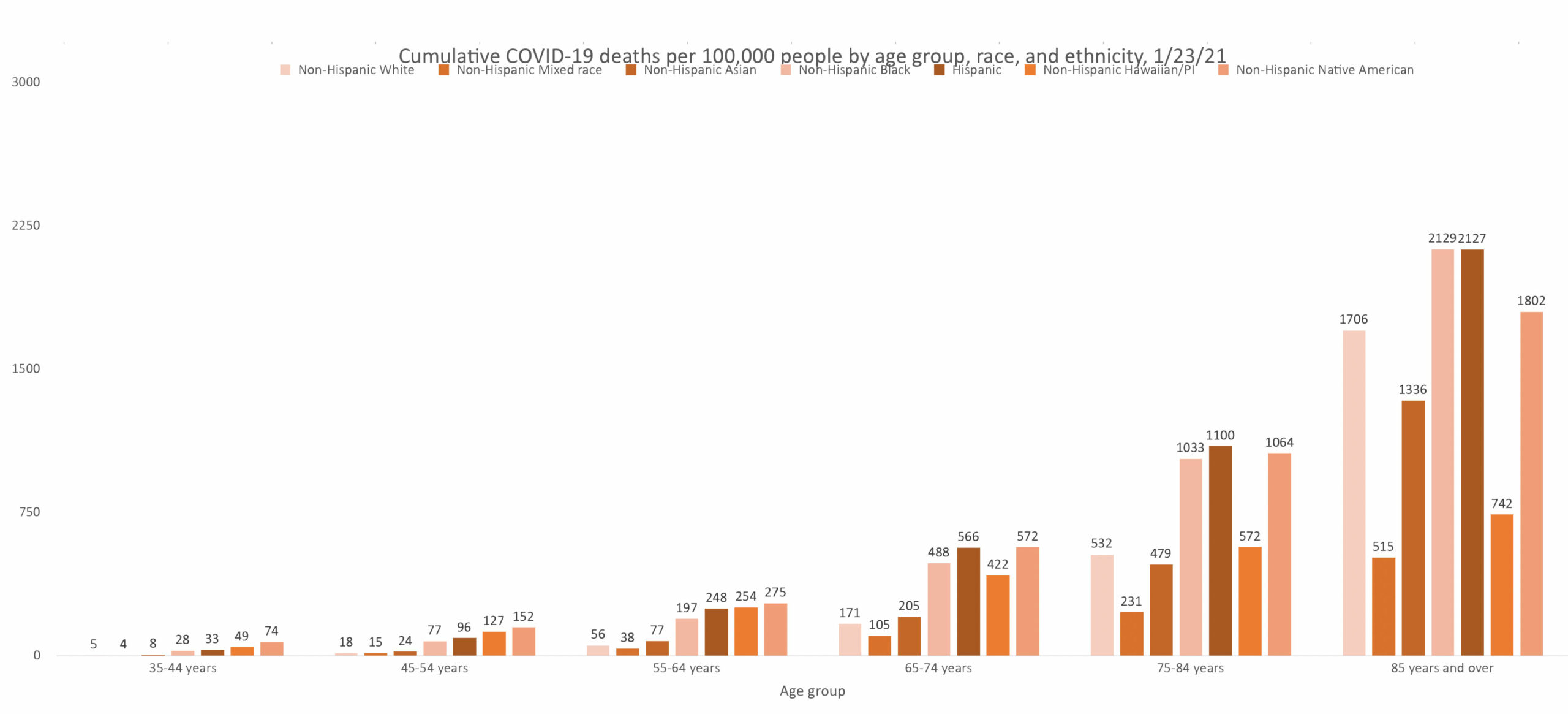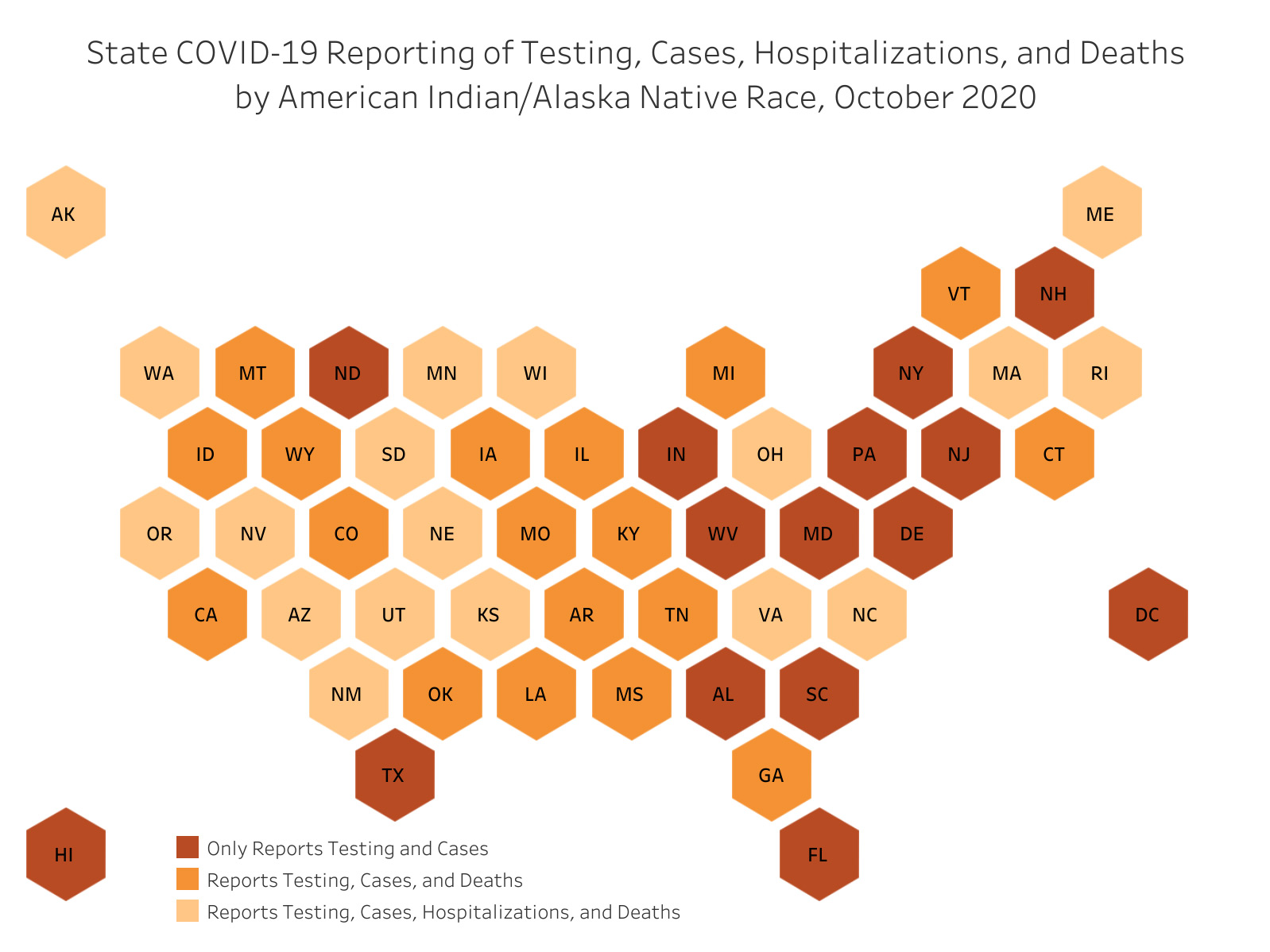Data Reporting by Race and Ethnicity
There are stark racial and ethnic disparities in COVID-19 deaths by age group (Figure 1). The CUSP database tracks which states report COVID-19 testing, cases, hospitalizations, deaths, and vaccinations by race and ethnicity. Reporting complete COVID-19 data by race and ethnicity in a clear and accessible format is important for targeting vaccination, testing, and other prevention efforts to those most likely to die of COVID-19.

Research
Dr. Ibram Kendi and The Atlantic’s COVID Tracking Project first called attention to the high proportion of states not reporting COVID-19 data by race and ethnicity. Once the Centers for Disease Control and Prevention started reporting these data, Drs. Bassett, Chen, and Krieger documented age-specific racial and ethnic disparities in COVID-19 deaths in a seminal article in PLOS Medicine.
The CUSP team described that a substantial number of states still do not report complete COVID-19-related hospitalization and mortality data for American Indian/Alaska Native (AI/AN) people, even though age-specific COVID-19 death rates for AI/AN people ages 25 to 64 are 4 to 19 times those of non-Hispanic White people. Data collected by Dr. Ibram Kendi and The Atlantic’s COVID Tracking Project in the COVID Racial Data Tracker finds that COVID-19 affects Black, Indigenous, Latinx, and other people of color at higher rates than non-Hispanic white people. Now, state health department websites are slow to reflect vaccination rates by race and ethnicity even though wide inequities are emerging in vaccine rollout as well.
In the early months of the pandemic, Dr. Ibram Kendi called upon states to report COVID-19 metrics by race and ethnicity. More than 9 months after Dr. Kendi’s call to action, many states still do not report complete data for COVID-19 health metrics.

All Related
- Racial disparities may be emerging in breakthrough infections. We must track them better. · The Washington Post · October 18, 2021 · CUSP Team Publications
- Disparities Made Invisible: COVID-19 Lessons from the Navajo and Lummi Nations · Public Health Post · December 8, 2020
- State COVID-19 Reporting of Testing, Cases, Hospitalizations, and Deaths by American Indian/Alaska Native Race · October 20, 2020 · Graph
- Social Determinants Associated with COVID-19 Mortality in the United States · medRxiv · September 3, 2020 · CUSP cited in Research
- Why Don’t We Know Who the Coronavirus Victims Are? · The Atlantic · April 1, 2020 · Stories
- view all
